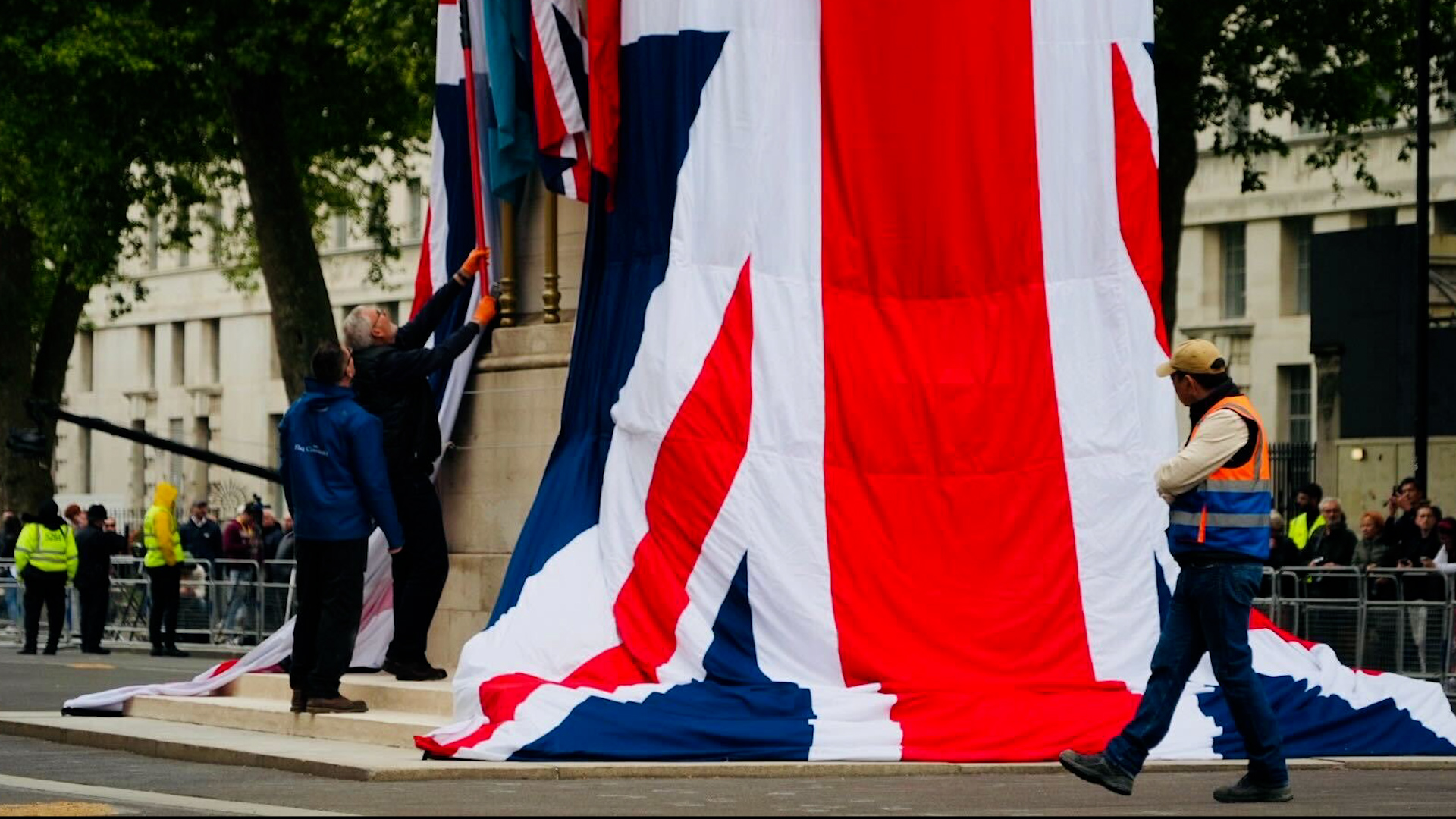
Cenotaph draped in Union Flags to mark the 80th anniversary of VE Day

The Cenotaph, which has stood in the centre of London as a mark of Remembrance since 1919, has been draped in Union flags to mark the end of the Second World War in Europe.
VE Day 80 commemorations took place across the Bank Holiday weekend and the Cenotaph was the nation's focal point.
It will be dressed in Union Flags for the duration of the four-day commemorations, echoing the 1920 unveiling of the monument to the fallen.
The last time it was covered with national flags was before its first unveiling, with King George V revealing the structure after pressing a button which caused the two flags on the Cenotaph to fall.
From the start of VE Day 80 events on Monday, it will provide a focal point for the commemorations and a place to pay silent tribute to all those who died, both at home and abroad, during the Second World War.
The Cenotaph, which means "empty tomb" in Greek, was initially a temporary monument designed by Edwin Lutyens in 1919.
It was originally made of wood and plaster and was erected as part of Peace Day events following a request from Prime Minister David Lloyd George.
Following its unveiling, the Cenotaph won the hearts of the public, and people spontaneously covered the memorial in wreaths to the dead and the missing from the Great War.
Within a week, close to a million people made the pilgrimage to the Whitehall site to pay their respects.
This led to the Cenotaph becoming permanent, with the structure we know today.
Made of Portland stone, the permanent Cenotaph was built and unveiled on Armistice Day on 11 November 1920 – becoming the site for the annual Remebrance service for more than 100 years.
The memorial has become a central point for all those whose family and friends had died during the First World War, with no known grave.
It is now in the care of English Heritage and is the site of the National Service of Remembrance every November, remembering all those involved in both World Wars and more recent conflicts.








